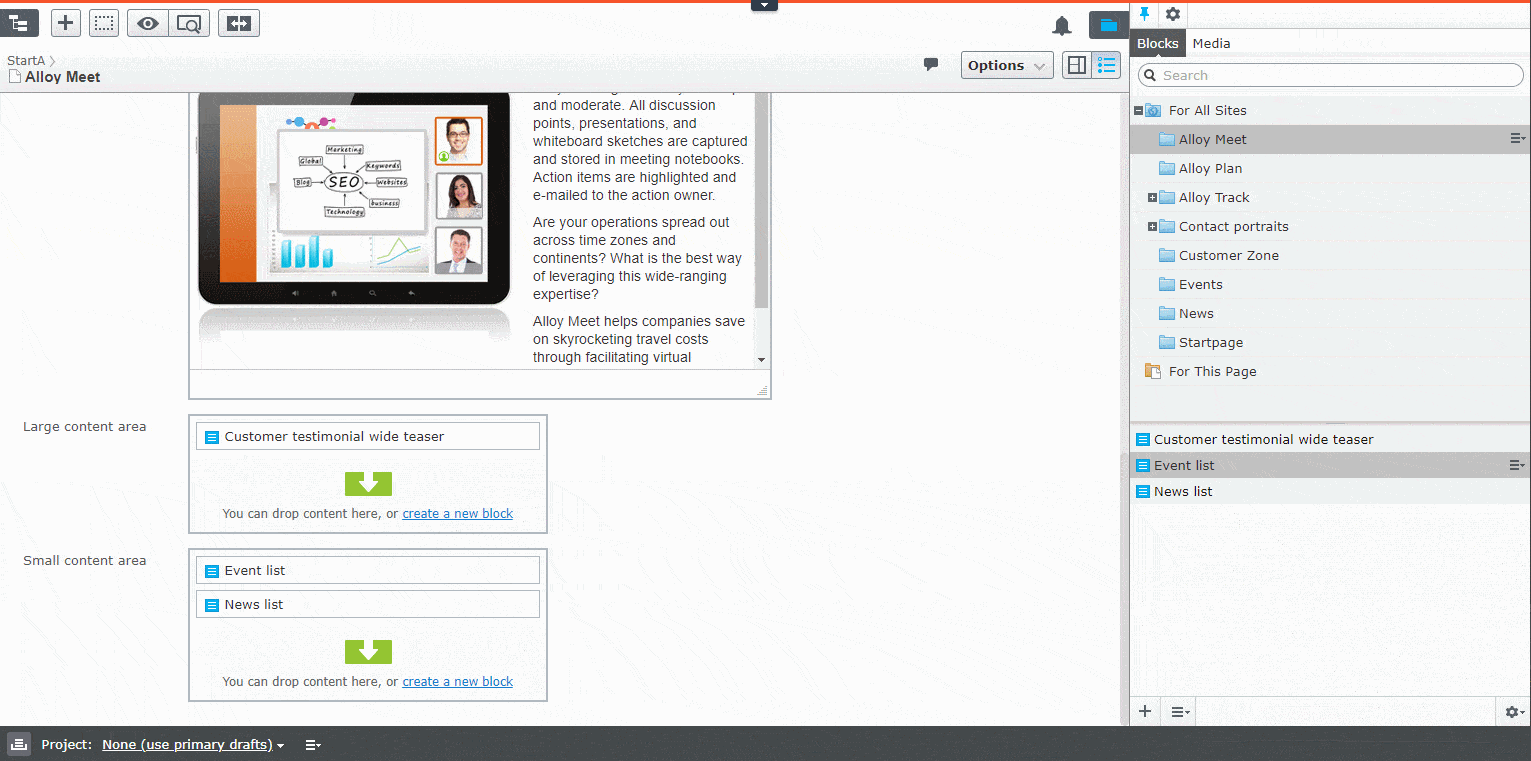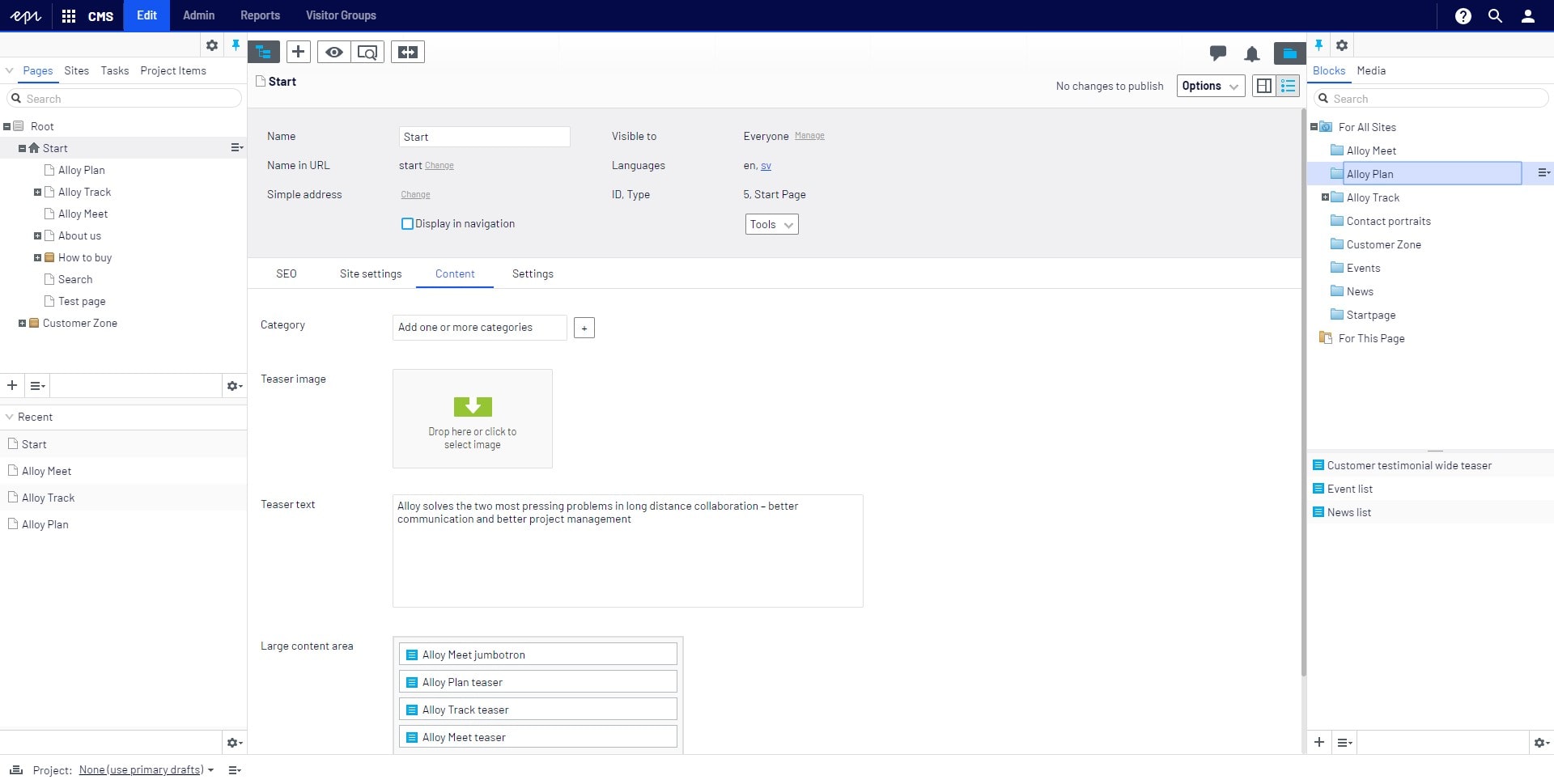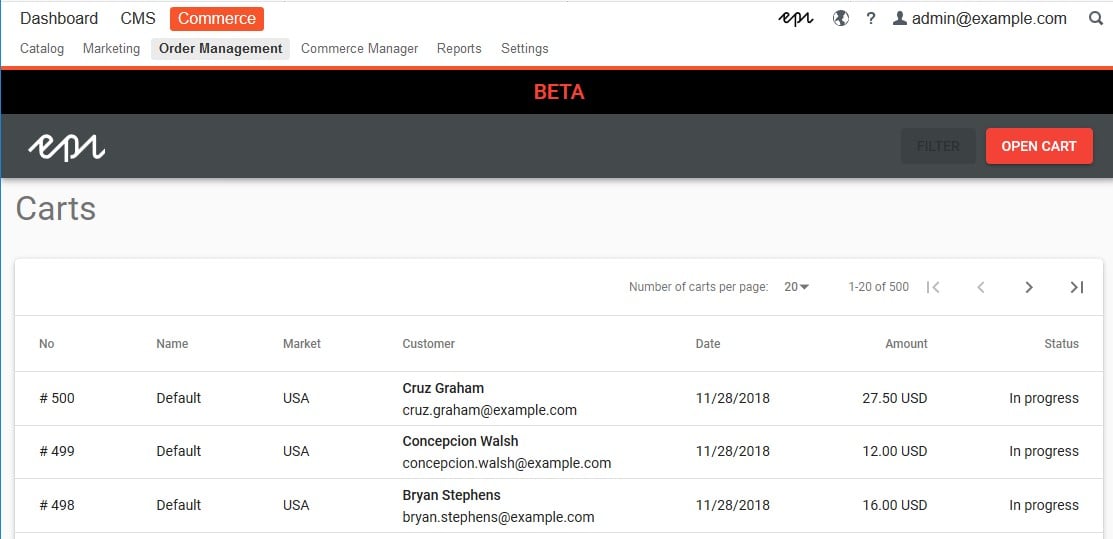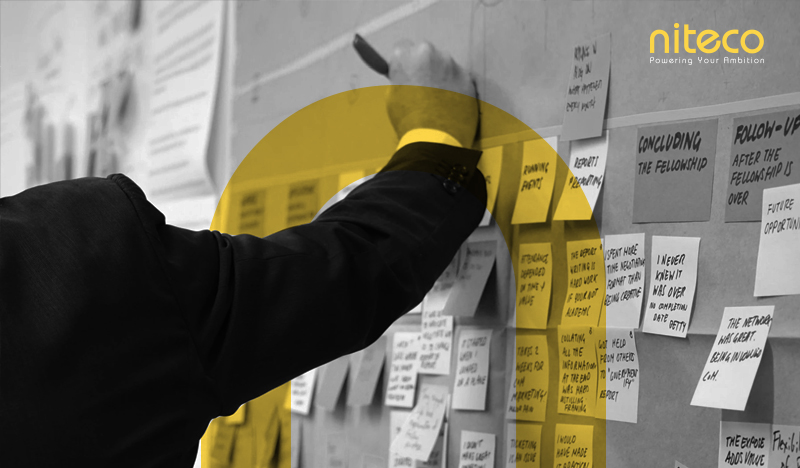Ascend season is done and the Optimizely community has returned home to digest what was discussed and presented at the various Ascend events across the globe. Optimizely MVP Nicola Ayan took an Ascend trip around the world – to Miami Beach, London and Stockholm – to gather the latest information on what is to come for Optimizely.
CMS Updates
There have been several updates made to the CMS lately, and here’s my favorite: enhancements to block editing and publishing, so you can now do both in the context of a page, and without leaving the page. This can be very useful to authors who manage content day in and day out.

Make sure to check this out, if you haven’t yet.
As part of a later minor release of CMS UI v11.21.x, the Editor UI has been refreshed and you will notice this very clearly in the main navigation as the colors have changed.

Commerce
We’ve recently seen improvements to Promotions, including updates to the calculation of complex discount combinations as well as allowing your marketing team to easily re-create or duplicate promotions. We’ve also seen updates to Reporting, including the ability to view daily sales reports and scheduling exports of detailed order data.
What is now in Beta is the standalone Customer Service Application, widely known as the Order Management UI, which was aimed to replace Commerce Manager.

For more details about this, visit Optimizely World.
Cloud Self Service
Great news for customers of the DXC (Digital eXperience Cloud). As you might have been booking Production deployments with Optimizely’s Managed Service in the past, you will now also be able to deploy directly to Production yourself if you wish.
In addition, self-service API key management has been introduced, which allows partner developers to achieve a seamless automated deployment across the multiple environments in the cloud, which used to be commonly operated using the DXC service management portal before. With the new deployment API (in beta), you can now integrate into the DXC and deploy it using code packages or code from a source environment.
Moreover, smooth deploy, also known as zero-downtime deployments, is now in Closed Beta and will be generally available in Q1 2020. This is made possible by automating the use of a secondary deployment slot (aka maintenance slot), which will be warmed up before it gets switched over to the live site. This will only be made available for CMS to start with, and Commerce will follow later. We will also see out-of-the-box support for Octopus Deploy and Azure DevOps with real-time telemetry.
When it comes to clearing and purging CDN cache, you can now also perform this yourself via the PaaS portal. If your DXC setup comes with extra integration environments, these can also be included within the portal so you have control over the CDN purging of these sites as well. The same goes for restarting apps, which you can now also run on demand by yourself by using the same portal.

Lastly, more telemetry and reporting will also be added to the self-service management portal to show you more relevant statistics about your platform, which now includes actual pageviews, errors and so on.
Personalization
I’m sure you’ve heard of Optimizely Perform. It is now simply called Optimizely Product Recommendations, one of the products in the wider Optimizely Personalization Suite. Using its predictive algorithms, you can now display individualized product recommendations throughout the entire customer journey, which powers features such as “You May Also Like” on product pages.
In addition, you can serve optimized search and navigation results and listings. That means your customers will now view and navigate across products in an order based on their own interactions with the website, boosting products that are more relevant for the specific individual.
Coming up next in this space is to give merchandisers the ability to customize boosting based on their own strategies, further empowering your marketing team by providing them with the tools to customize the rules or basis for individualizing your customers’ search and navigation experience.
Analytics
You might have heard of Optimizely Insight, which provides visualization of your website visitors’ profiles as well as their tracked behavior. Now called Analytics, it captures and displays event interactions across multiple devices, allowing you to build segments on top of these profiles, using filters and criteria. These segments can then be used as follows:
• Visitor groups – these segments can be used for personalization of content
• Marketing automation recipient list – these segments (or groups of profiles based on a certain filter) can be imported into Optimizely Campaign, a marketing automation product, allowing you to target them with emails
As for these filters, while there are out-of-the-box criteria you can choose from, you can also build your own custom filters. An example of this is the following query, which is now in progress and will soon be available out of the box:
• Customers who have made [X] or more purchases between [StartDate] and [EndDate]
This is made possible by the Optimizely Profile Store API, which you can explore here.
Coming up next in this space is to provide merchandisers with the ability to track/capture personalization events, including content and product recommendations clicks.
Single page application (SPA) with Optimizely
For those who haven’t seen an SPA implementation with Optimizely, there is a sample reference site. It presents an approach on how to display content using a Javascript framework (VueJS) for routing to power navigation and frontend templates while keeping Optimizely’s on-page editing framework on the CMS.
The client-side framework will be relying heavily on Optimizely’s Content Delivery APIs to be able to show content. Commerce APIs will be coming soon.
You can find the source code here.
In addition, there’s also been demand for having a React equivalent, which is now being researched by Optimizely in order to hopefully roll it out as part of the roadmap.
Optimizely Accelerator Package
To support the partner developer community, Optimizely has also released an accelerator package that offers a starting point for CMS and Commerce implementations. The project, called Foundation, is well-structured and follows a modular approach, allowing developers to decide which products or projects to include or exclude from the solution. It currently has components for CMS, Commerce, Personalization, Find and Social. The rest will then follow.
This project is open-source and you can find it here.
And beyond…
So far, we’ve talked about the Cloud Service, Content Delivery API (headless), Optimizely Foundation as well as SaaS services that are already available right now.
As part of the roadmap for the DXP, ASP.NET Core support is now underway, which will be another choice of solution for customers once rolled out. We will see more management apps generally available (Commerce Cloud and Content Cloud). In addition, we will also see Orders and Forms become part of the Content and Cloud Services.
I’m sure there’s a lot of other things that I haven’t been able to include here. I do hope the above was valuable and that you’ve picked up something new you can apply to your own Optimizely websites.
to transform your business and drive results?



